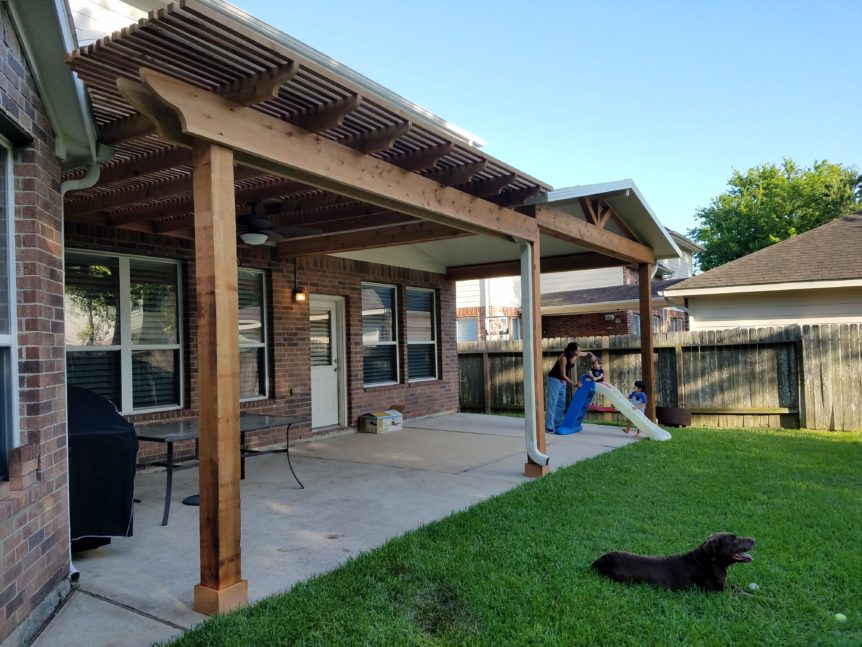Cedar, with its rustic charm and natural beauty, has long been a favorite choice for outdoor structures like pergolas and covered patios. However, if you’ve ever noticed cracks appearing in your cedar posts, you’re not alone. Let’s explore why these cracks occur and how you can embrace them as part of cedar’s character.
The Nature of Cedar
Before we dive into the cracks, let’s appreciate cedar’s unique qualities. Cedar is a living material, responsive to its environment. As it interacts with moisture, temperature, and sunlight, it undergoes subtle transformations. These changes are what give cedar its distinctive appearance and durability.
The Culprit: Checking
Checking – that’s the term for those seemingly worrisome cracks. But fear not! Checking is a natural occurrence in cedar timbers. Here’s why it happens:
- Moisture Dance: Cedar breathes. When exposed to dry air, the exterior releases moisture, causing it to shrink. Conversely, when it absorbs moisture, it swells. This constant dance between moisture levels leads to checking.
- Along the Grain: Checking appears as lengthwise fissures along the wood grain. Picture it as tiny grooves or fissures, akin to the intricate patterns in an ancient tree’s bark.
- Cedar’s Response: As cedar acclimates to its surroundings, it adjusts to the ever-changing moisture levels. Checking is its way of adapting. It’s like cedar’s version of wrinkles – a testament to its journey.
Cedar’s Stoic Strength
Now, let’s address the elephant in the room: Do these cracks weaken cedar posts? Not really. Cedar, especially Douglas-fir, is a timber superhero. Here’s why:
- Dimensional Stability: Douglas-fir remains steadfast against tension, compression, and deflection. It’s like the stoic grandparent who’s seen it all and still stands tall.
- Chemical Resistance: Cedar scoffs at chemical reactions and mechanical abrasions. It’s the material of choice for industrial applications – from bridges to mining tunnels.
- Fasteners’ Friend: Cedar holds fasteners securely. So, even with checking, your pergola won’t lose its structural integrity.
Embracing the Cracks
Rather than fretting over cracks, consider them part of cedar’s story:
- Stain Strategy: Dark stains may highlight checking, but fear not! Apply another coat of stain, and the cracks will blend seamlessly. It’s like a touch-up for cedar’s character.
- Patience Pays: Allow your pergola to acclimate for at least six months to a year before re-staining. Let it settle into its new home, just like you would after moving.
The Beauty of Imperfection
Remember, perfection lies in imperfection. Cedar’s cracks tell tales of seasons, storms, and sunsets. They’re the roadmap of its life. So, embrace them. Your cedar posts aren’t just supporting structures; they’re storytellers.
Cracks in cedar posts are not flaws; they’re badges of resilience. As you sip your morning coffee under that cedar pergola, or screened in porch enclosure, admire the checking – a silent reminder that nature’s artistry is imperfectly perfect.
Call the pros at Texas Patio Covers for additional information.

